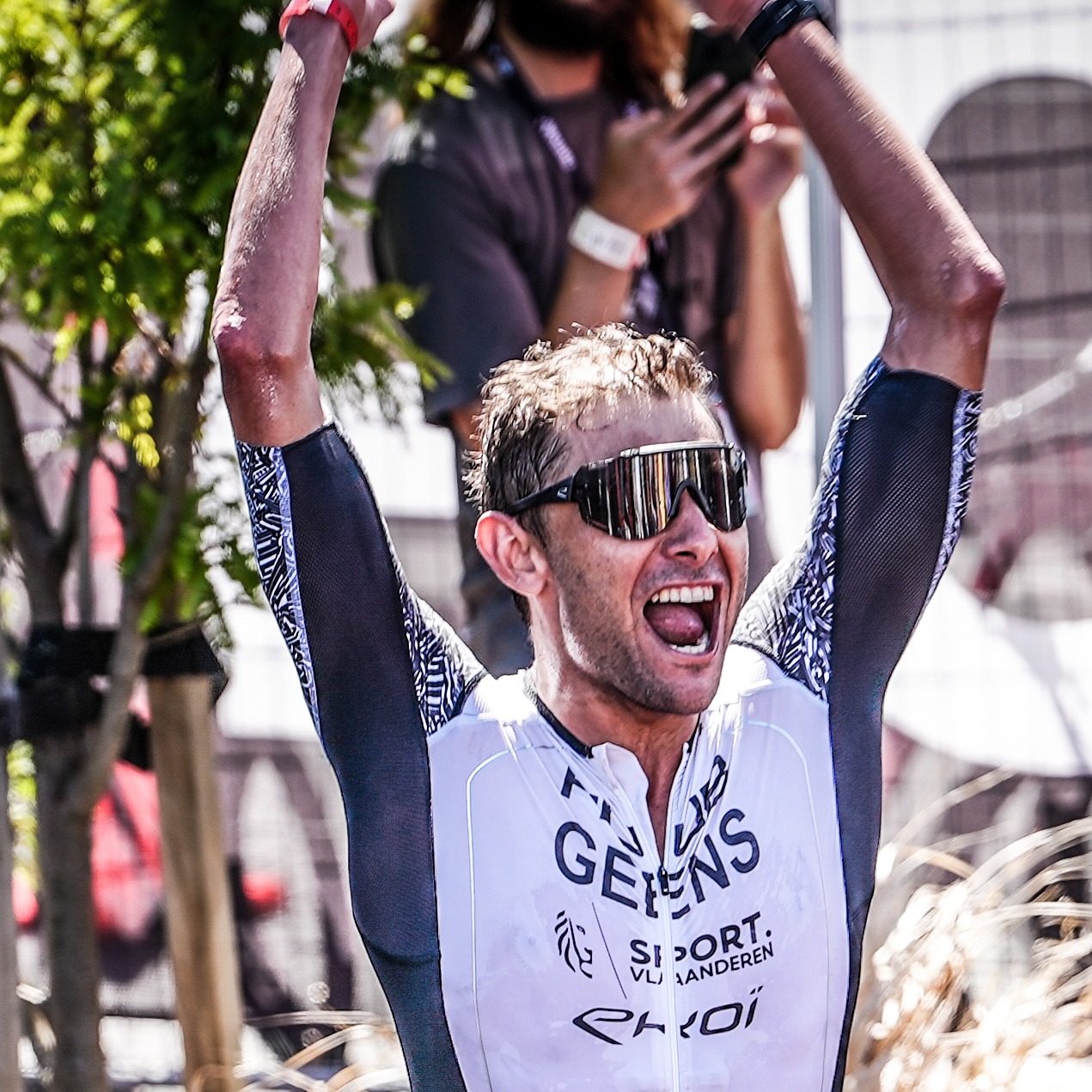
Jelle Geens
IRONMAN 70.3® World Championships
Jelle's headline numbers
Jelle's strategy
Fueling
Carbohydrate is the main fuel you burn when racing. Failing to fuel properly is a leading cause of underperformance in longer races.
Pre-race Fueling: As Robert H. Schuller, the famous American pastor and author once said; “Spectacular achievement is always preceded by unspectacular preparation.” This quote nicely sums up the months of training Jelle put in prior to his win at the IRONMAN 70.3Ⓡ World Championships in Taupō, as well as the time he took to prepare his fueling strategy ahead of the race. He started the day with a carb rich breakfast consisting primarily of white rice and toast with honey, whilst sipping on 500ml of carb drink with electrolytes, before having an energy gel in the final moments prior to the race start. This meant that he hit the pre-race carbohydrate guidelines perfectly - the ‘unspectacular preparation.’
Race Fueling: After a solid swim, Jelle got to work on the bike and made sure to fuel regularly to maintain his blood glucose levels throughout the ride, allowing him to respond to any surges from the group. His strategy was simple; he relied solely on two 750ml (24oz) bottles, each containing ~120g of carbs. On the run, Jelle maintained this consistent fueling approach by consuming an energy gel at 6km and 12km, before a final gel at ~18km (corresponding to the moment he made his way into first place). We describe this approach as ‘front-loaded’, meaning he consumed ~120g/h of carb on the bike and let this drop to ~75g/h on the run. This approach saw him run the fastest time on the day and take the tape for his first IRONMAN 70.3Ⓡ World Championships title, as well as comfortably hitting the carbohydrate intake guidelines.
Hydration
Taking on board an appropriate amount of fluid and sodium is essential to maintaining blood volume and supporting the cardiovascular effort needed to perform on race day.
Whilst the absolute amount of sodium and fluid consumed per hour is important, it’s critical to consider these in relation to each other. This is known as 'relative sodium concentration' and it’s expressed in milligrams per litre (mg/L). How much sodium you’re taking in per litre of fluid is more important than the absolute amount taken in per hour.
Sweat sodium concentration (mg/L) is largely genetically determined and remains relatively stable. Knowing how salty your sweat is enables you to replace a good proportion of your sweat losses, which can range from 200-2,000mg/L.
Whilst Jelle’s losses are on the low side, getting his hydration strategy right is still important if he wants to perform at his best.
Learn moreClick the button ‘pre-loading electrolytes’ above to see how Jelle hydrated pre-race. His strategy to combine his carbohydrate, fluid and sodium in two 750ml (24oz) bottles for the bike was simple and effective. He also picked up one bottle of water from the on-course aid stations and drank ~200ml of this. Together, his fluid and sodium intake on the bike likely meant that he hit T2 in a good state of hydration. On the run, Jelle grabbed cups of water at each aid station, some of which he consumed, and some of which were used for cooling purposes by throwing the water over his face and head.
Caffeine
Beyond the Three Levers of Performance (carb, sodium and fluid), caffeine is one of only a few substances that is proven to improve performance for most endurance athletes as it can help stave off mental and physical fatigue.
Jelle pre-caffeinated with two cups of coffee at breakfast and a final gel containing caffeine in the last 30 minutes before the swim. This will have led to an increase in caffeine levels in the blood which will likely have been maintained during the bike leg, since caffeine has a relatively long half-life (~4 to 5 hours) in most people. Two caffeine gels over the first 12km of the run provided a final top up, potentially providing that extra few percent in energy that allowed him to make the pass on second place at around the 18km point. Jelle’s caffeine intake for the race still fell slightly below the scientific recommendations, and could be an area for development for future races.
How Jelle hit his numbers
Here's everything that Jelle ate and drank on the day...
Final thoughts
Jelle's full stats
Data Confidence?
There is some confidence in the quantities and brands of products consumed but the data may lack specifics (e.g. volumes specific flavours). A high number of estimations have been made and the room for error is moderate-high. There may also be the possibility that some intake has been grossly over- or under-estimated.